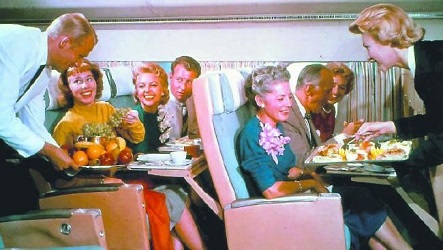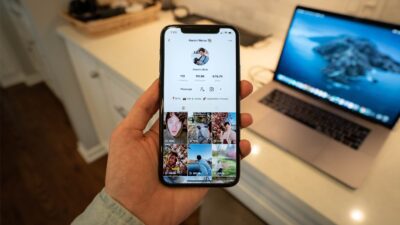
People power
**As rights to this article belong to the original publisher, The Australian’s The Deal Magazine, please contact The Australian for permission to republish.**
Jan Carlzon’s 1989 book Moments of Truth (HarperBusiness) contains a timeless marketing lesson: every single time a customer comes into contact with your brand it is an opportunity to either impress or disappoint them, to win them over or to lose them.
Carlzon famously transformed Scandinavian Airlines in the 1980s with this marketing philosophy. Every touch point became important as a chance to positively affect the brand, from the colour schemes in the terminal to the design of the uniforms and the way airline staff spoke to people in person or on the phone.
In today’s digitally charged marketing world, the new term is Customer Experience, or CX. Companies have spent millions designing the ideal customer experience online, through every moment of the customer’s journey, whether it be on a website, app, chat bot, social media or all of them at once.
But most marketers lost one battle during the 25 years between Carlzon’s book and the digital world latching on to CX. And it was around interactions that were human to human. Human CX, if you like! Those times when front-line staff in a store or a call centre dealt with a customer and had a prevailing mantra that “the customer is always right”. Carlzon’s marketing disciples realised these were some of the most important and decisive moments of truth with a brand, a true marketing investment.
And so began the battle between marketing and finance, a battle since won by finance teams offshoring call centres to cheaper labour and cutting back on the in-store staff who actually served customers.
Few major organisations have bucked the trend. Apple is famous for the customer service in its stores, disrupting the model by having more people on the shop floor – staff who can multi-task and enable you to pay for your goods anywhere in the store. Naysayers will argue that Apple’s premium price points means it can afford such service, but some of the next-best human customer experiences are found in our own big box retailers offering the lowest prices. Bunnings, Officeworks and JB Hi-Fi are clearly better at serving their customers’ needs on the shop floor than the big department stores.
Others have mixed attitudes. In recent times the banks, airlines and telcos have put a lot of effort into their in-person physical experiences, yet they frustrate their customers time and time again via their overseas call centres. At a time when 70 per cent of customers over the age of 55 – the wealthy baby boomers segment – still want to talk to someone locally on the phone to sort out an issue, these organisations are forcing them into two cost-saving options they don’t want: overseas call centre staff, or millennial-inspired chat bots, forums and social media interactions.
Sadly, marketers have lost their voice at the C-Suite table on these supposed moments of truth. The finance-led “transformation” teams have had their way, delivering savings in the short term, but with long-term damage to their customers’ perceptions of the brand.
No marketer can hand on heart say it is OK to make a calling customer go through a series of computerised options and be put on hold for up to an hour, and when they do get through provide them with a sub-optimal level of service.
Leading insurance brand AAMI is one organisation that has stuck to its mantra of “talk to a real person”. Call and someone answers the phone in the friendly voice of the brand. No computerised options, no lengthy on-hold music, no off-shoring – a great customer experience. That it is unusual today is a blight on the marketing industry.
The fact that marketers now simply turn a blind eye to the problem was reiterated at Medibank Private’s recent results announcement. CEO Craig Drummond proudly extolled the success of the company’s new customer-centric ways by saying that its share of industry complaints had reduced from 61 per cent to 48 per cent, but that was still close to double their market share of 27 per cent of the industry’s customers!
To Drummond’s credit, he did go on to say that Medibank Private had since invested in 60 additional call centre staff and extended its operating hours. At the very least it was a welcome shift in language from a CEO in this space – he talked about it as a marketing investment, not a staff cost.
The communication agency groups and the consulting firms are quickly starting to speak for the marketers when it comes to these important human moments of truth with brands.
Accenture Interactive’s global head, Brian Whipple, recently said its philosophy was that brands were built through hundreds of customer interactions, from e-commerce experiences to the way people are treated in physical stores. He seemed to be channelling Jan Carlzon’s great marketing lesson.
It’s time this glitch in human customer experience was fixed by both marketers and CEOs.
This article was originally published in The Australian’s The Deal Magazine. Read the original article.
Thought leader, marketer and board director, Andrew Baxter is the Senior Advisor at KPMG's entrepreneurial Customer, Brand & Marketing Advisory business, a Senior Advisor at BGH Capital, as well as the Adjunct Professor of Marketing at the University of Sydney, and a Non-Executive Director at Australian Pork and Sydney Symphony Orchestra.
Share
We believe in open and honest access to knowledge. We use a Creative Commons Attribution NoDerivatives licence for our articles and podcasts, so you can republish them for free, online or in print.







